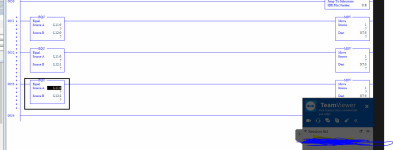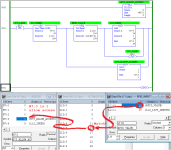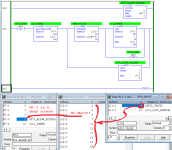zachary.wilson
Member
Howdy Everyone,
We are working on a project in rslogix 5000 where we are using an rfid reader to read the barcodes then if they are on a list of Dints we use a file search/compare and if the barcode is on the list of autorized users it allows them to reset certain faults stuff like that. We have one machine that we need to do this project on but it is 500, i don't think it has the FSC like 5000 does, the only way i can think of to do it is, have a whole bunch of lines and everyone one of them have a equals line to, so if it is equal to it, it moves a 1 into another integer and then we can go from there. Is there another way of doing this? just seems like it would be alot of lines to do that, plus with people constantly leaving or starting, updating the program to accept these other people. in 5000 we are pulling from a list in ignition that constantly downloads to it so it keeps the list up to date. thank you.
We are working on a project in rslogix 5000 where we are using an rfid reader to read the barcodes then if they are on a list of Dints we use a file search/compare and if the barcode is on the list of autorized users it allows them to reset certain faults stuff like that. We have one machine that we need to do this project on but it is 500, i don't think it has the FSC like 5000 does, the only way i can think of to do it is, have a whole bunch of lines and everyone one of them have a equals line to, so if it is equal to it, it moves a 1 into another integer and then we can go from there. Is there another way of doing this? just seems like it would be alot of lines to do that, plus with people constantly leaving or starting, updating the program to accept these other people. in 5000 we are pulling from a list in ignition that constantly downloads to it so it keeps the list up to date. thank you.






